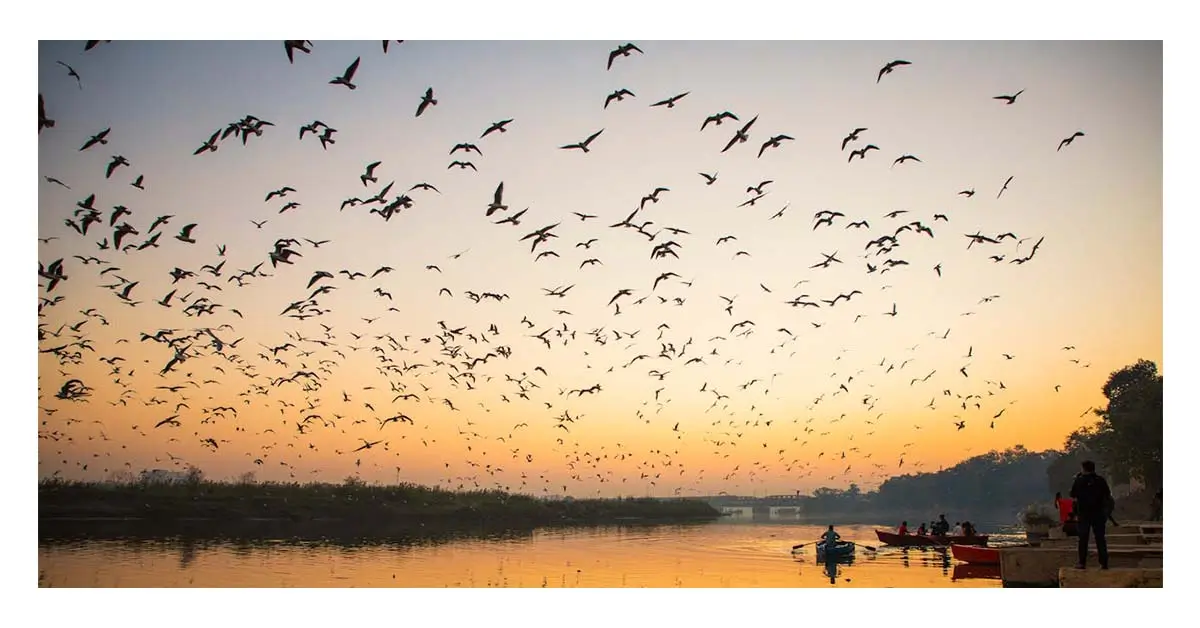Discover how to fully immerse yourself in the wonders of wildlife with our comprehensive guide. Learn about ethical viewing, top destinations, photography tips, and ways to contribute to conservation. Start your wildlife adventure today!
Contents
- 1 How to Immerse Yourself in the Wonders of Wildlife
- 1.1 Understanding Wildlife
- 1.2 Preparing for Your Wildlife Adventure
- 1.3 Best Destinations for Wildlife Enthusiasts
- 1.4 Famous Wildlife Sanctuaries Worldwide
- 1.5 Ethical Wildlife Viewing
- 1.6 Wildlife Photography Tips
- 1.7 Birdwatching Basics
- 1.8 Exploring Marine Wildlife
- 1.9 Wildlife Safari Tips
- 1.10 Hiking and Wildlife Spotting
- 1.11 Backyard Wildlife Watching
- 1.12 The Importance of Wildlife Conservation
- 1.13 Educational Programs and Volunteering
- 1.14 Connecting with Wildlife Through Technology
- 2 FAQs
How to Immerse Yourself in the Wonders of Wildlife
There’s something profoundly invigorating about immersing oneself in the wonders of wildlife. Whether it’s the call of a distant bird, the sight of a majestic deer, or the vibrant colors of marine life, connecting with nature offers unparalleled joy and serenity. This article aims to guide you through the myriad ways to experience and appreciate wildlife, from preparing for your adventure to ensuring ethical interactions with nature.
Understanding Wildlife
Definition and Significance of Wildlife
Wildlife encompasses all non-domesticated animals, plants, and other organisms that thrive in natural environments. These animals and plants support the health of our world and are essential to preserving ecological equilibrium.
The Diversity of Wildlife Habitats
Wildlife habitats range from dense forests and vast savannahs to deep oceans and sprawling wetlands. Each supports a unique array of species adapted to its specific environment.
The Role of Wildlife in Ecosystems
Wildlife is essential for pollination, seed dispersal, and pest control. Predators help keep prey populations in check, ensuring a balanced ecosystem. Understanding these roles can deepen your appreciation of wildlife.
Preparing for Your Wildlife Adventure
Researching Your Destination
Before setting off on your wildlife adventure, research is critical. Look into the types of wildlife you can expect to see, the best times for sightings, and any specific regulations or guidelines for the area.
Essential Gear and Clothing
Pack appropriately for your destination. Essential gear may include binoculars, a camera with a zoom lens, field guides, sturdy footwear, and weather-appropriate clothing. Don’t forget sunscreen and insect repellent.
Health and Safety Considerations
Ensure your vaccines are current and you have a basic first-aid kit. Familiarize yourself with any potential hazards in the area, such as dangerous animals or plants, and know how to respond in an emergency.
Best Destinations for Wildlife Enthusiasts
National Parks and Reserves
National parks and reserves are havens for wildlife enthusiasts. Unmatched wildlife experiences can be found in locations like Australia’s Great Barrier Reef Marine Park, South Africa’s Kruger National Park, and the United States’ Yellowstone National Park.
Famous Wildlife Sanctuaries Worldwide
Sanctuaries like the Galápagos Islands, the Amazon Rainforest, and the Serengeti are famous for their rich biodiversity and unique species. These destinations often provide guided tours and educational programs.
Hidden Gems for Unique Wildlife Experiences
Explore lesser-known spots like Borneo’s rainforests, Madagascar’s unique ecosystem, and the wetlands of Pantanal in Brazil for extraordinary wildlife encounters without the crowds.
Ethical Wildlife Viewing
Importance of Ethical Practices
Ethical wildlife viewing ensures that our presence does not disturb or harm animals. This approach focuses on fostering respect for wildlife and implementing conservation efforts to ensure the thriving and sustainable existence of wildlife populations.
Guidelines for Responsible Wildlife Observation
Keep a secure distance from animals, don’t feed them, and follow local regulations. If you want to see animals without invading their area, use binoculars or a zoom lens on your camera.
Impact of Unethical Behavior on Wildlife
Unethical behaviors, such as disturbing animals or damaging habitats, can lead to stress, injury, or even death for wildlife. It can also disrupt breeding and feeding patterns, threatening entire populations.
Wildlife Photography Tips
Choosing the Right Equipment
A DSLR or mirrorless camera with a fine zoom lens is ideal for wildlife photography. A tripod can help stabilize your shots, especially in low light.
Techniques for Capturing Stunning Wildlife Photos
Patience is key. Spend time observing your subjects and understanding their behavior. Use natural light to your advantage, and aim for eye-level shots to create a connection with the animal.
Respecting Wildlife While Photographing
Never chase or harass animals for a photo. Move slowly and quietly, and respect their space. Remember, a great shot does not disturb the wildlife.
Birdwatching Basics
Essential Gear for Birdwatching
Binoculars are a must for birdwatching. A field guide for bird identification and a notebook for logging sightings are also helpful.
Identifying Common Bird Species
Start by learning to identify common species in your area. Use field guides and birding apps to assist with identification and familiarize yourself with bird calls.
Best Locations for Birdwatching
National parks, nature reserves, and even urban parks can be great spots for birdwatching. Early mornings are typically the best time to see and hear birds.
Exploring Marine Wildlife
Snorkeling and Diving Tips
Snorkeling and diving open up a world of marine wildlife. Ensure you have the proper training and equipment, and always snorkel or dive with a buddy.
Identifying Marine Species
Marine species identification guides and apps can help you recognize the creatures you encounter. Take your time and observe the vibrant underwater life.
Conservation Efforts for Marine Wildlife
Support conservation efforts by choosing eco-friendly tour operators and participating in beach clean-ups. Reducing plastic use and supporting marine conservation organizations also make a difference.
Wildlife Safari Tips
Choosing the Right Safari for You
When choosing a safari, consider the type of wildlife you want to see, the season, and your budget. Research different safari operators and their conservation practices.
What to Expect on a Safari
On safari, you can expect early morning and late afternoon game drives guided by experts. Wildlife sightings are not guaranteed, but the experience is often enriching regardless.
Tips for a Successful Safari Experience
Be patient and stay quiet during game drives. Listen to your guide’s instructions and be prepared for various weather conditions. Hold a pair of binoculars and a camera to capture the moments.
Hiking and Wildlife Spotting
Best Hiking Trails for Wildlife Spotting
Trails in national parks and nature reserves often provide opportunities to spot wildlife. Popular trails include those in Yosemite National Park, the Rockies, and the Scottish Highlands.
Tips for Safe Wildlife Encounters on Trails
Stay on marked trails, make noise to avoid surprising wildlife, and know what to do if you encounter larger animals. Carry bear spray in bear country and keep it safe from all wildlife.
Essential Gear for Hiking in Wildlife Areas
Good hiking boots, a map, plenty of water, snacks, and a first aid kit are essential. Binoculars and a camera can enhance your wildlife spotting experience.
Backyard Wildlife Watching
Creating a Wildlife-Friendly Garden
Plant native species to attract local wildlife. Provide water sources like birdbaths, and avoid using pesticides. Bird feeders and nesting boxes can also attract various species.
Identifying Local Wildlife Species
Use field guides and apps to identify the species that visit your garden. Keep a journal to note your observations and changes over time.
Tips for Observing Wildlife in Your Backyard
Create a quiet, observation-friendly space. Early mornings and evenings are often the best times for wildlife activity. Use binoculars and a camera to capture moments without disturbing the animals.
The Importance of Wildlife Conservation
Current Threats to Wildlife
Wildlife faces numerous threats, including habitat destruction, climate change, poaching, and pollution. Understanding these threats is the first step in contributing to conservation efforts.
How Conservation Efforts Help
Conservation efforts such as protected areas, breeding programs, and anti-poaching laws help preserve species and habitats. Public awareness and education are also crucial.
Ways You Can Contribute to Wildlife Conservation
Support conservation organizations, reduce your ecological footprint, and participate in local conservation projects. Teaching people the value of protecting wildlife can also have a significant influence.
Educational Programs and Volunteering
Participating in Wildlife Education Programs
Wildlife education programs offered by many parks and organizations provide valuable knowledge about local species and conservation efforts. These courses can improve your understanding of and admiration for wildlife.
Volunteering Opportunities in Wildlife Conservation
Volunteering offers hands-on experience and a chance to contribute directly to conservation efforts. Opportunities range from local projects to international programs in Africa and South America.
Benefits of Getting Involved
Getting involved in conservation not only helps wildlife but also enriches your own life. It provides a sense of purpose and a deeper connection to nature.
Connecting with Wildlife Through Technology
Wildlife Apps and Tools
Various apps can help you identify species, log sightings, and learn about wildlife. Examples include iNaturalist, Merlin Bird ID, and Seek by iNaturalist.
Virtual Wildlife Tours
Virtual tours offer a way to experience wildlife from home. Many organizations provide live streams and recorded tours of wildlife reserves and sanctuaries.
Online Resources for Learning About Wildlife
Websites, documentaries, and online courses offer extensive resources for learning about wildlife and conservation. Platforms like National Geographic and the World Wildlife Fund provide valuable information and insights.
FAQs
Q. How do you immerse yourself in nature?
To immerse yourself in nature, spend time outdoors, away from urban distractions. Take long walks in forests, parks, or near bodies of water, and fully engage your senses—notice the sounds, sights, and scents around you. Practicing mindfulness and being present in the moment helps deepen the experience of connection with nature.
Q. How do I get into nature?
Start by visiting nearby natural spaces like parks, trails, or botanical gardens. Plan short hikes, camping trips, or weekend getaways to nature reserves or national parks. If you’re in a city, even walking through green spaces or sitting in a quiet park can help you feel closer to nature.
Q. How to be close to nature?
You can be close to nature by incorporating it into your daily routine. Whether you start your day with a walk outdoors, garden, or simply sit outside to enjoy fresh air, small actions make a big difference. Additionally, adopting eco-friendly practices and mindfulness when interacting with nature fosters a deeper connection.
Q. How can I bring nature into my life?
Bringing nature into your life can be as simple as adding houseplants to your living space or creating a garden. Open your windows for fresh air and natural light, use natural materials in your home décor, or listen to nature sounds while working or relaxing. You can also bring nature into your routine by scheduling regular outdoor activities.
Q. How can nature inspire me?
For it, you should observe nature’s patterns and colors and how it thrives in various environments. Nature offers lessons in resilience, growth, and beauty. Creative activities such as writing, painting, or photography can help you express your connection to the natural world while practicing mindfulness outdoors enhances your sense of inspiration.
Conclusion
Immersing yourself in the wonders of wildlife is a rewarding experience. Whether exploring distant lands or observing your backyard, there are countless ways to connect with nature. Remember to practice ethical wildlife viewing, support conservation efforts, and continually educate yourself about the natural world. So, grab your binoculars, pack your gear, and embark on an unforgettable wildlife adventure!
Read more about Health & Wellness.
You might like to read:










